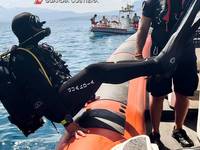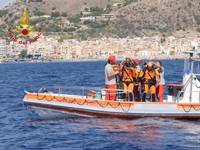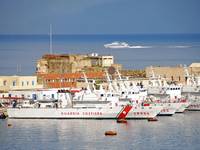i911: Tapping Cellphone Location Data to Save Lives
In recent years the U.S. Coast Guard has identified an increasing trend in the use of cellular phones by the maritime public when communicating distress. In 2018, leadership in the Office of Search and Rescue (SAR) at Coast Guard Headquarters asked the Research and Development Center (RDC) to investigate available technologies that could assist Coast Guard responders in adapting to this trend by leveraging the cellphone’s internal GPS. The RDC, located in New London, Conn., has been serving the Coast Guard for nearly 50 years through research, testing and evaluation of various technologies across all 11 missions. During market research for this project in 2019, the RDC investigated an emerging technology called i911 created by Chris Bennett, the founder of Callyo.
i911 is offered as a free service to first responders and provides fast, accurate cellphone location information. It pairs consumer smartphone technology with a simple web-based interface to locate mariners for search and rescue mission controllers in Coast Guard Command Centers. The distressed boater does not need to download a mobile application or be registered to enable this locator capability. However, this tool only works with more modern cellphones that are equipped with an internal GPS, and may not work on all cellphone types. i911 has been optimized to work in areas where there is very limited cellphone coverage and in most cases gives position data accurate within a few meters every few seconds. Depending on cellphone service i911 can determine locations of distressed mariners up to 15-20 nautical miles offshore. A recent study by the RDC looked at search and rescue cases in the United States over the past five years and found that nearly 90% of all cases were no more than 20 nautical miles offshore.
Recognizing the possibilities for i911 to support Coast Guard SAR missions, the RDC entered a Cooperative Research and Development Agreement (CRADA) with Callyo in summer 2019. As part of the CRADA, the RDC and Callyo worked together to customize some of the features of i911 to optimize use by the watchstanders in the Coast Guard Command Centers. The RDC led an i911 pilot test throughout the Coast Guard’s First District, which covers the northeastern U.S. from Northern New Jersey to Maine. The pilot lasted six months and was an instant success. Within a few days of having i911, Sector Long Island Sound in New Haven, Conn., used it on a search and rescue case involving three people on a 12-foot inflatable dinghy that was blown out to sea by a storm. Using i911, the command center received the dinghy’s position within seconds, and the location proved to be accurate to within a few meters. Rescue crews were able to get to the distressed mariners much faster than they would have without use of the technology.
The research went operational March 26, 2020, when the Coast Guard authorized all command centers across the United States to use i911 to help determine the location of distressed mariners. Command center watch standers expressed excitement at how easy it was to use and, even more importantly, how accurate it was. Lt. Cmdr. Adriana Gaenzle, chief of the command center at Sector Anchorage, said, “It's awesome to see innovative ways to incorporate new technology into our abilities to prosecute SAR.” This Coast Guard roll-out came just in time for the upcoming 2020 summer boating season. Boaters are reminded that the Coast Guard recommends using the VHF radio if possible as this is still considered the most reliable means of communication for mariners in distress.
The Author
Lt. Anne Newton is Project Manager, C5I Branch, USCG Research and Development Center.





